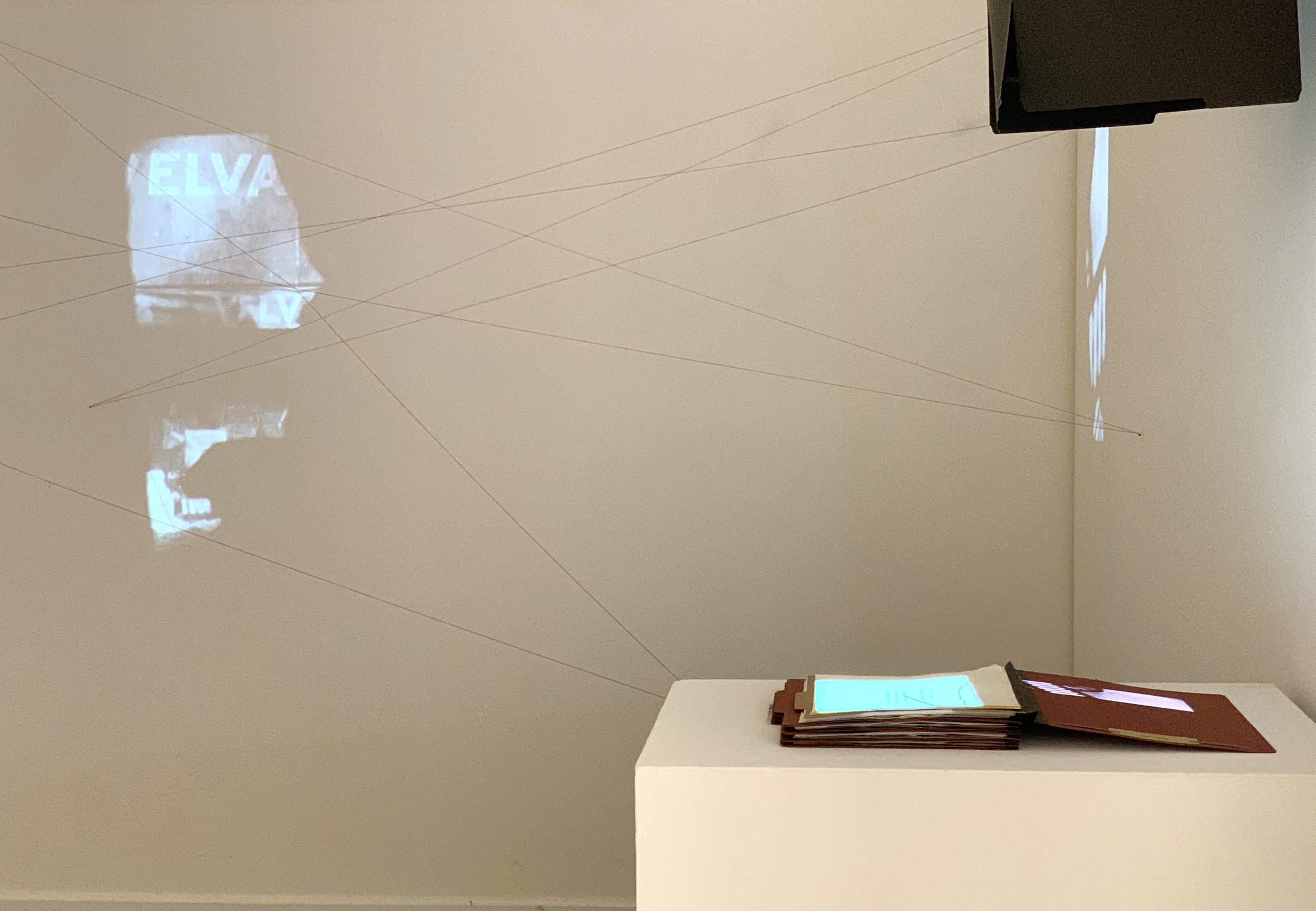My Most Gracious Friend
an installation by Anne Haydock
September 2nd- October 5th, 2024
Velvalee Dickinson was the first American woman to face the death penalty on charges of spying for a wartime enemy. The central documents in her case were a series of five letters written in open code– a type of steganography in which messages do not follow a pre-determined pattern but instead are improvised and depend on context to carry their double meaning. In her letters a ‘German bisque doll in a hula grass skirt sent in for repair,” for example, stood in for a warship damaged at Pearl Harbor. She was ultimately arrested by the FBI after a chain of events initiated when one of her letters was “returned to sender”- one of her doll-shop customers whose identity she had assumed in the coded letter.
Dubbed the “Doll Woman” by the press, Dickinson was ultimately convicted on a lesser charge of censorship violation. After her release in 1951 she served as a personal secretary for Eunice Kennedy, after which little is known about her later life. There is also no consensus on her motivation; an FBI agent who participated in her interrogation told reporters that she was “an introvert, embittered by life and the frustration of childlessness,” while contemporary accounts suggest she was driven by outstanding medical bills.
Aspects of the historical record I find especially interesting are the lack of documentation on Dickinson’s motivation and later life, and how often she is described as doing something “quietly” in both contemporaneous and posthumous accounts. The censorship charge and use of open code in her letters, as opposed to a cypher, also bring up interesting connotations of reading for subtext and the Hays Code (the Hollywood production code at its height from 1934 to 1954) that, among many other proscriptions, prohibited any overt suggestion of same sex relationships and required that the “sympathy of the audience shall never be thrown to the side of crime.”
Elizebeth Smith Friedman, one of the first female cryptanalysts, was primarily engaged at that time in breaking complex cypher systems. The George C. Marshall Research Library holds an extensive collection of her papers and audio recordings, including unpublished journals in which she balks at press reports describing her as “demure”. While her WWII work was largely attributed to male colleagues during her lifetime, recent declassification of official documents has resulted in a surge of posthumous interest.
In 1944, as a favor to the federal prosecutor, Friedman agreed to spend “a few hours” looking over the Dickinson letters in her spare time, connecting the “doll code” to specific ship movements. Friedman prefaced her report with the disclaimer that “the code in the letters is the ‘intangible’ type of method not susceptible to scientific proof.” This is the historical extent of her direct relationship to Dickinson– the two women never met. This body of work imagines anotherscenario… what if they had been correspondents? And what new meanings could we construct if we read both Dickenson’s open code and Friedman’s archive in another context?
Part of an ongoing series exploring elided histories and the epistolary form, My Most Gracious Friend constructs an imagined relationship between WWII-era spy Velvalee Dickinson and cryptologist Elizebeth Smith Friedman based on a counter-reading of Dickinson’s coded letters and Friedman’s papers. The central piece incorporates Super 8mm silhouettes projected over archival documents, rephotographed with careful choreography to reveal, and conceal, curated glimpses of the archival record. Flipped pages of printed text, illuminated by clear film leader with flashes of newsprint ink-transfer animation, interweave historical facts and imagined details, while flanking projections alternate between the unmediated Super 8mm reels and color 16mm sequences depicting embodied moments with the two women. An audio collage of layered soundscapes and brief excerpts from tapes dictated by Freidman accompanies the moving image loops, which are viewed through interwoven threads suggesting the complexity of the constructed connection. Three additional pieces, interactive books in the form of vintage file folders paired with overhead split-screen projections, invite the viewer to participate in the decoding process.
Anne Haydock is a filmmaker who employs both experimental and documentary frameworks to explore the ways in which we construct knowledge from audiovisual evidence. She is especially interested in the intersection of archival documents, culturally resonant mythologies, and “shadow” histories: personal, usually unrecorded, moments of everyday life. Her practice integrates 16mm and Super 8 cinematography, multi-screen projection, digital rephotography, cameraless animation, book arts, and complex soundscapes incorporating found and archival audio.
Based in Appleton, WI, Anne is Assistant Professor of Film Studies at Lawrence University and director of the Hurvis Center for Film Studies. Her award-winning work has screened nationally and internationally at film festivals and galleries including Antimatter (Victoria, BC), Chicago Underground (CUFF), Montreal Underground (MUFF), Pleasure Dome (Toronto, ON), Palach Gallery (Rijeka, Croatia), New York Rio Tokyo Gallery (Berlin, Germany), Ladyfest Leeds (UK), Echo Park Film Center (Los Angeles, CA), and as part of the Black Maria touring program.



